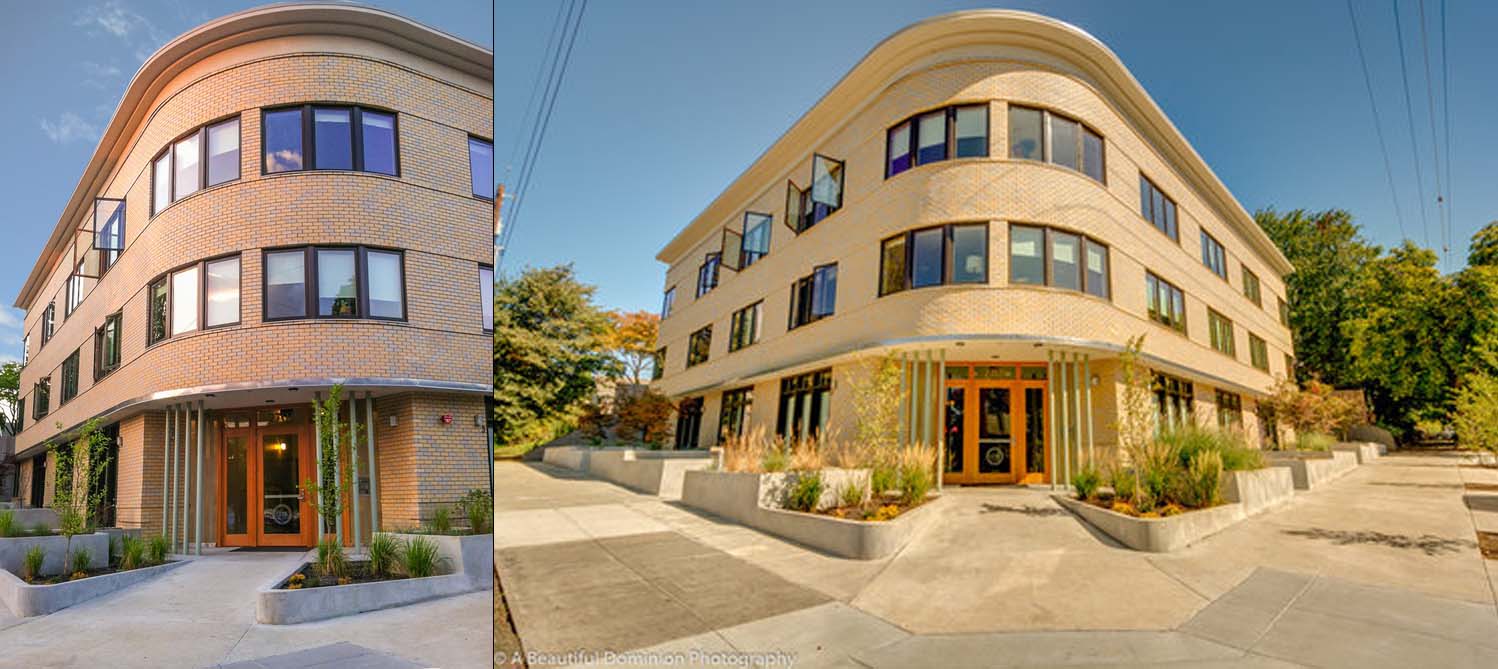Building Data:
Neighborhood: Hosford-Abernethy
Year Built: 2017
Typology: Townhouse, styled to look like Walk-up Apartment Building
Units: 6
Stories: 3
Site Area: 2,850sf
Building Area: 6,090
FAR: 2.14:1
Density: 91.7 du/net acre
Zoning: RX (Central Residential)
Off Street Parking? None
Is it Legal? Yes
Notes:
Just west of Ladd’s Addition, we discovered this fascinating recent addition to the neighborhood. This little project shows what a little attention to proportion and form can do. This building takes a form common to pre-war multifamily housing, a U-shaped building with to wings and an entry court. Unlike a typical apartment building in this format, this project is a somewhat unorthodox configuration; six three-story townhouses.
The façade material is the mundane material, EIFS, a foam and stucco cladding system we typically associate with suburban strip malls. Here it’s used to great effect, including a nice offset around the windows, giving them a depth not usually found in contemporary construction. We located a great precedent about a block away, showing historic context for this design.
Breakdown of how a good façade is composed
The subject property “Before”
We particularly appreciate this building because of its sensitivity to its surroundings and its careful application of classical proportions. While composed in the form of a well-established typology, the building also exhibits a clear hierarchy of base middle and top. It is symmetrically composed, and its windows are roughly twice as high as they are wide. On the block face, the building’s cornice is roughly in line with the roof heights of surrounding structures. The building achieves a very high net density because it is on a very small lot. At roughly 50x57, the lot is about half the size of a standard Portland residential parcel. We uncovered a “before” photo from the City, showing the property before this building was constructed. The lot appears to have been chiseled off from a neighboring property, creating a new half-lot.
Nice window detail, unfortunate PGE meter placement.
Formal-factor compatibility with surrounding context
Neighboring Historical Precedent
Site Plan

































